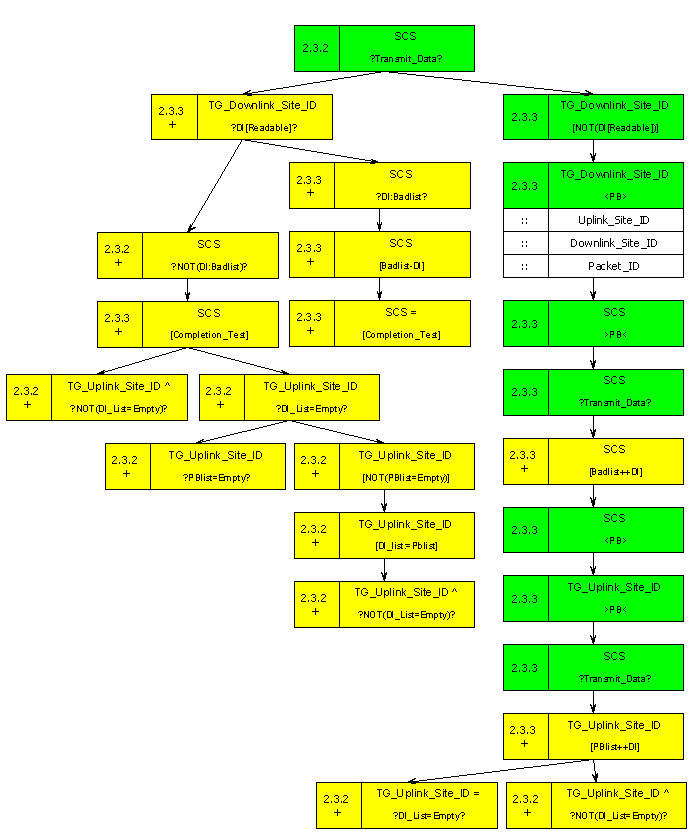Behavior Engineering Based Software Change Case Studies
Background
. Behavior Engineering
. Software Change
. Software Tools
. Microwave Oven Case Study
. Satellite Control System
Mircowave Oven Case Study
Version 1
. Requirements and RBT
. The DBT
. Other Design Diagrams
Version 2 and 3
. Version 2
. Version 3
Evolutionary Diagrams
. EVDBT for version 1,2 and 3
. Other Evolutionary Diagrams
Satellite Control System
Requirements and RBTs
. Requirement 2.1
. Requirement 2.2
. Requirement 2.2.1
. Requirement 2.2.2
. Requirement 2.2.3
. Requirement 2.3
. Requirement 2.3.1
. Requirement 2.3.2
. Requirement 2.3.3
. Requirement 2.3.4
. Requirement 2.3.5
. Design Behavior Tree
Other Versions
. Version 2 Requirement 2.2.3
. DBT for Version 2
. Version 3 Requirement 2.1
. DBT for Version 3
. Version 4 Requirement 2.2.2
. DBT for Version 4
. Version 5 Requirement 2.3.4
. DBT for Version 5
. The Evolutionary DBT
2.3.3 Handling Data Packet Errors
The downlink site shall prepare and send the
SCS one PB (packet is bad) acknowledgment message for each DI (data
packet) it is unable to read.
If the downlink site can read the data packet, no action is necessary.
PB1) A PB (packet is bad) acknowledgment message shall contain the
following data:
(1) the uplink site ID, i.e., uplink_ID;
(2) the downlink site ID, i.e., downlink_ID; and
(3) a packet ID, i.e., packet_ID.
PB2) For each bad packet
forwarded to the downlink site, the SCS shall receive a PB (packet is
bad) acknowledgment message.
PB3) Upon receipt of a PB acknowledgment message, the SCS shall forward
it to the uplink site to request a packet replacement.
PB4) A PB message may be received only during a valid "Transmit Data"
transaction.
PB5) The SCS shall keep track of each bad packet message uploaded and
whether the packet was or was not replaced by the uplink site..
The corresponding Requirement Behavior Tree is as below:
